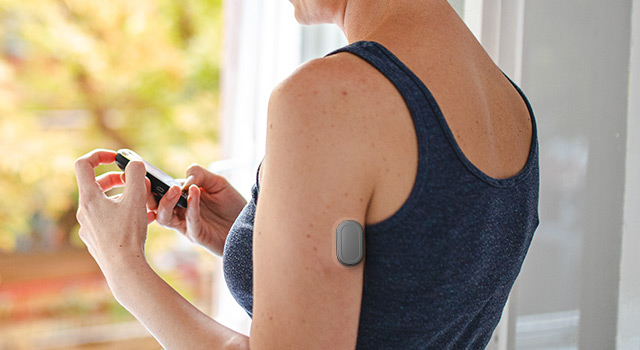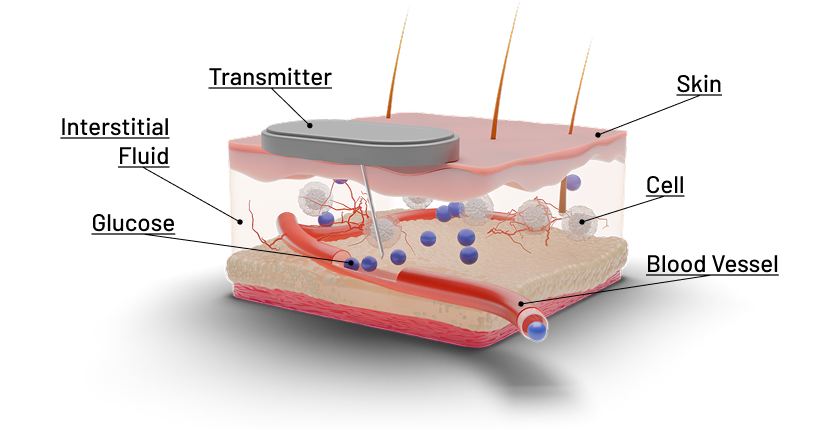

SIGNALS+ 在线快讯订阅
持续关注Signals+,了解有关连接、数字健康、电气化和智能工业的最新见解、信息和想法并加以利用。
NO MORE FINGER STICKS: HOW A CONTINUOUS GLUCOSE MONITOR (CGM) TRANSFORMS LIVES
KEY TAKEAWAYS
|
Imagine your grandfather managing his diabetes without test strips or confusion, or your teenager avoiding multiple, daily finger sticks, and the daily grind of Type 1 diabetes (T1D).
Continuous glucose monitors (CGMs) offer real hope to those with diabetes by enabling real-time, bloodless monitoring and integrating insulin pumps for automated delivery. But CGM manufacturers face multiple challenges, including restricted size, weight, and power (SWaP), and the shift to greener batteries. Above all, the advanced technology solutions must be of clinical-grade quality.
This has led many manufacturers to turn to advanced semiconductor technologies to compete. But while wearable tech has now become mainstream, CGMs also have hurdles to overcome to scale and impact, including affordability, stigma, and government regulations.
DIABETES FACTS AND FIGURES
- 589 million adults (age 20 to 79) are living with diabetes—about 1 in 9 globally—with projections rising to 853 million by 20501
- Costs (medication, hospital stays, etc.) exceed $1 trillion for diabetes-related health spending in 20241
- In the U.S., $1 out of every $4 healthcare dollars is spent on diabetes2
- Nearly 1 in 3 US adolescents has prediabetes3
HOW A CGM WORKS

A CGM features a microsensor that usually attaches to the arm to continually monitor glucose levels in the interstitial fluid (a thin layer of fluid that surrounds the cells of the tissue just below the skin), instead of the blood. A CGM shows overall glucose trends and patterns 24/7 and delivers this data to an app to improve health maintenance and avoid dangerous situations.
CGM: CLINICAL-GRADE TECHNOLOGIES DELIVER ACTIONABLE INSIGHTS

Diabetes care has traditionally relied on finger-stick blood glucose monitors (BGMs), test strips, and bulky insulin pumps. Today, CGMs provide real-time glucose data without blood tests, alerting users and integrating with insulin pumps to form artificial insulin delivery (AID) systems.
These diabetes management systems are closed-loop systems and rely on advanced, clinical-grade technology enablers. These systems include a CGM and an insulin pump. The CGM wearable consists of an analog front end (AFE), a microcontroller unit (MCU; ADI’s MCU has built-in Bluetooth®), and an accelerometer. The insulin pump includes power, MCU/BT, accelerometer, motor control, and signal chain. Both products require software such as actigraphy tracking.
CGM SOLUTIONS

In addition, some CGM companies are moving away from 3 V batteries toward 1.5 V silver oxide batteries, as there’s a concern with 200M+ CGMs being thrown out each year with a lithium-ion battery inside. CGM manufacturers are looking for the lowest overall power budget of components (such as MCU and AFE) working from 1.5V silver oxide batteries directly.
A WIN-WIN: DIABETES DATA AND DIRECT SAVINGS
The world is turning to the convenience and accuracy of CGM and away from finger sticks, which only provide a single glucose reading at a time. These devices not only save patients significant costs on needles and test strips but also deliver continuous insights that help prevent expensive complications and hospitalizations. The CGM empowers patients to track symptoms, adjust diet, or time medications, while providing an overall better quality of life, which to many is invaluable.
SIMPLE, EFFECTIVE, PREDICTIVE DIABETES MANAGEMENT
Ultimately, the CGM transition rests on the quality of continuous patient insights— is blood sugar too low due to an incorrect carb count, or was it caused by a particularly strenuous workout? —and the ability to monitor and judge these insights more accurately and decisively over time.
Accurate, clinical-grade glucose data empowers people with diabetes to dose appropriate levels of insulin, helping prevent complications like blood vessel damage, heart disease, stroke, kidney disease, and diabetic coma. Cloud-based reports track trends over time, enabling healthcare professionals to make better treatment decisions. Finger sticks simply can't match this level of precision, insights, or proactive management.
THE FUTURE OF DIABETES MANAGEMENT IS CONTINUOUS AND CONVENIENT

CGMs have transformed the lives of those with T1D—reducing the daily grind and even inspiring a Barbie® doll to help children feel accepted. Now about the size of a bottle cap and lighter than a paperclip, CGMs are more discreet, comfortable, and stigma-free than ever before.
These robust, yet small devices signal a broader shift in healthcare from reactive to predictive care, where real-time data drives timely interventions. For manufacturers, delivering this capability in such a small footprint requires advanced signal-processing expertise. Without it, achieving the precision and reliability needed for truly personalized, clinical-grade diabetes management would be impossible.
References
1 International Diabetes Foundation. The Diabetes Atlas.
2 CDC. Health and Economic Benefits of Diabetes Interventions.
3 CDC. Spotlight on Diabetes Data.




